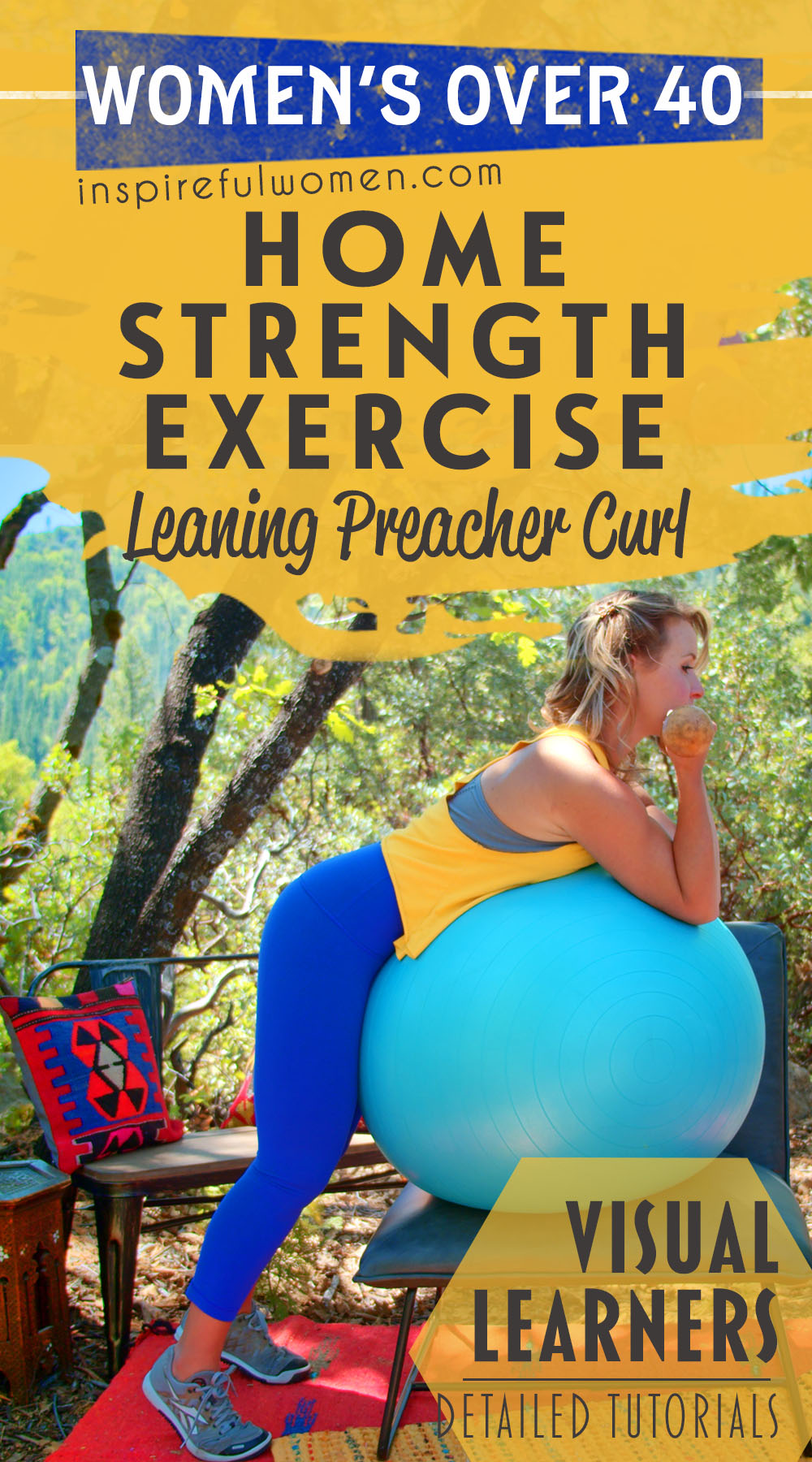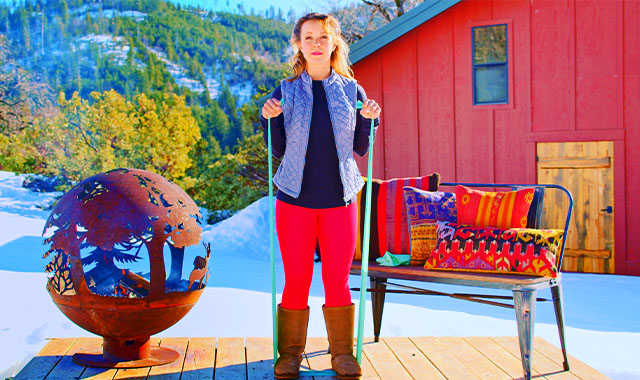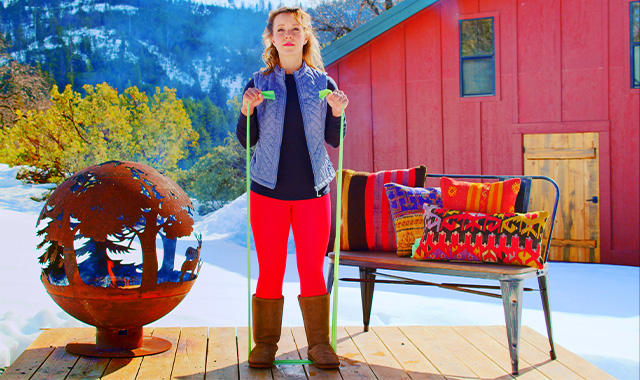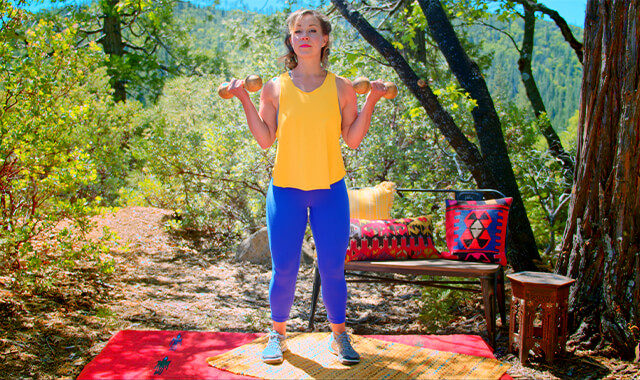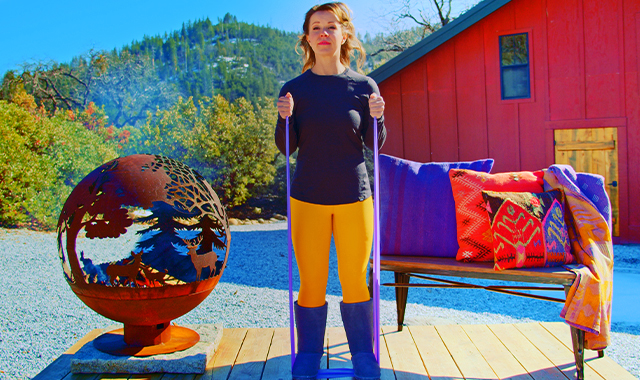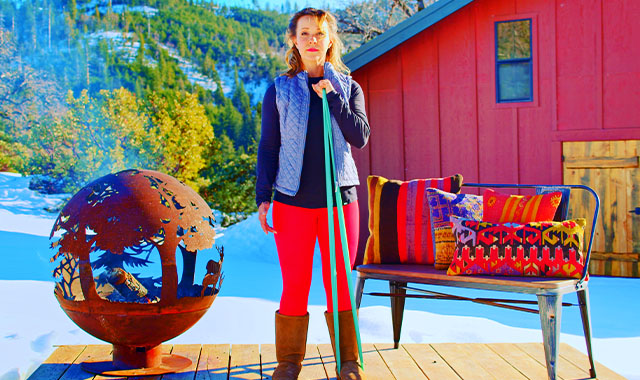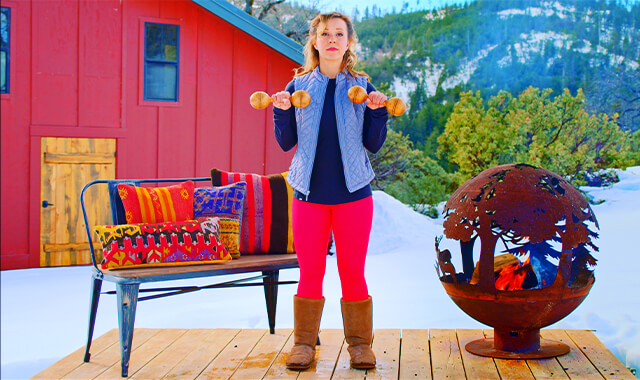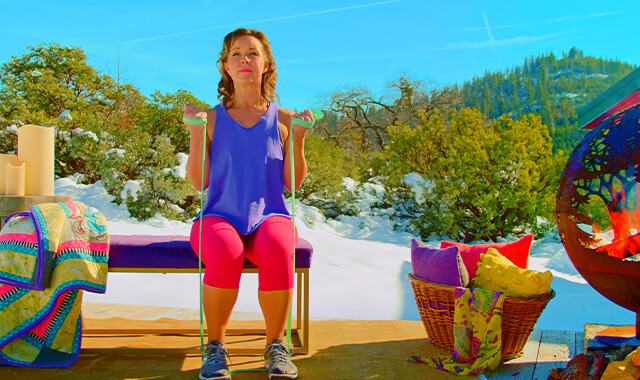Dumbbell Leaning Preacher Curl (ball)
How to Do the Dumbbell Leaning Preacher Curl (Yoga Ball on Chair - Standing) | In-Depth Guide [VISUAL LEARNERS]
Proper Form & Common Mistakes | Home Resistance Training
WHAT DO YOU WANT TO SEE?
QUICK DEMO
QUICK DEMO
MUSCLES THIS WORKS
MUSCLES
MAIN MUSCLES WORKED IN Dumbbell Leaning Preacher Curls
BICEPS BRACHII
OTHER MUSCLES WORKED:
- Brachialis
- Supinator
STARTING POINTERS
Starting Pointers
WHAT WE'RE DOING TODAY
Other names for this exercise: Scott Curl
ALL WE'RE DOING:
Doing a bicep curl variation while leaning over a fitness ball.
This version of the preacher curl is more comfortable to me than being on my knees on the ground over the ball, but also requires a bit more setup.
It can be used if you do not have an incline bench or surface and it is not comfortable to kneel on the ground - or if you just can’t get into a good position. A stability ball is used to rest your arms on. The upper arm is brought forward and supported by the ball and the forearm is free to straighten and bend. The forward position of the upper arm puts the long head of the biceps in a position where it will not be as active as the short head. This position and the use of dumbbells put a nice stretch on the biceps before you activate it to bend the elbow and rotate the forearm.
HOW TO DO THE EXERCISE
LOOKS
HOW Dumbbell Leaning Preacher Curls SHAPE OUR BODY
Working the short head of the biceps will increase the total width of the biceps muscle.
PROPER FORM
PROPER FORM: Dumbbell Leaning Preacher Curl
EQUIPMENT, SETS & REPS
EQUIPMENT
Stability Ball
Chair
Low table or stool for placing stability ball
SUGGESTED STARTING WEIGHT FOR WOMEN:
5-8 pounds
SETS & REPS:
2 sets of 8 reps
PACE:
Quicker up and slower down. Controlled and isolated to the elbow joint and forearm.
BODY POSITION
BODY POSITION FOR THE Dumbbell Leaning Preacher Curl
BALL- NOTE: I find that the ball material and my bare elbows can sometimes cause a pull that is not comfortable- something that fixes that for me is to put a towel over the ball, or wear long sleeves.
Place the stability ball on a low surface - so that when you stand with your chest resting on the ball, your upper arm can lie comfortably over the ball - supporting your upper arm and leaving your forearm free to move without interference from the ball.
FEET: Feet can be at whatever distance apart that they need to be to support and stabilize your body.
BODY STANCE: Stand with your chest over the ball. Leaning on the ball so that your upper body and arms are stabilized on the ball. The exact positioning will be dependent on the person's height, the size of the ball. Neutral spine position, sternum lifted, shoulder blades in and down your back.
ARMS: Shoulders are slightly forward with the pointy part of the back of your elbow resting on the ball. Rotate your upper arm so that the eye of your elbow - the soft part on your inner elbow is up - this is exactly like the way you would hold your arm when they insert the needle to draw blood - forward and rotated so the eye of the elbow is facing up. Your elbows are straight or can be slightly bent.
GRIP: Neutral grip - Palms facing inwards – towards each other. Hold the handle of the dumbbell closer to the end of the dumbbell that is on the thumb side of your hand - so the head on the pinky side is further away from your wrist.
HOW TO DO
HOW TO DO Dumbbell Leaning Preacher Curls
CUE: Focus on squeezing the inside part of your biceps as you bend your elbow.
Begin by bending your elbows to pull the dumbbells up towards your shoulder.
As you pull the dumbbells up, rotate your forearm so that your palm faces up. The head of the dumbbell on the pinky side of your hand should be leading the way, and should come close to the inside of your shoulder (where it meets the torso).
Try to complete the forearm rotation by the time your elbows are flexed 90 degrees (to maximize the resistance on the biceps and supinator muscles).
Once you have reached the end of your elbow flexion (fully bent), squeeze the inside of your biceps and pause.
Slowly lower reverse the movement to lower the weights back down. Keep a slight bend in your elbow to keep tension on the muscle and to prevent overstretching the ligaments of your elbow.
Begin the next rep.
HOW TO SAFELY GET OUT OF THE EXERCISE
Bend your elbows. Stand up off of the ball, bend your knees and hips to squat down and set the weights on the floor.
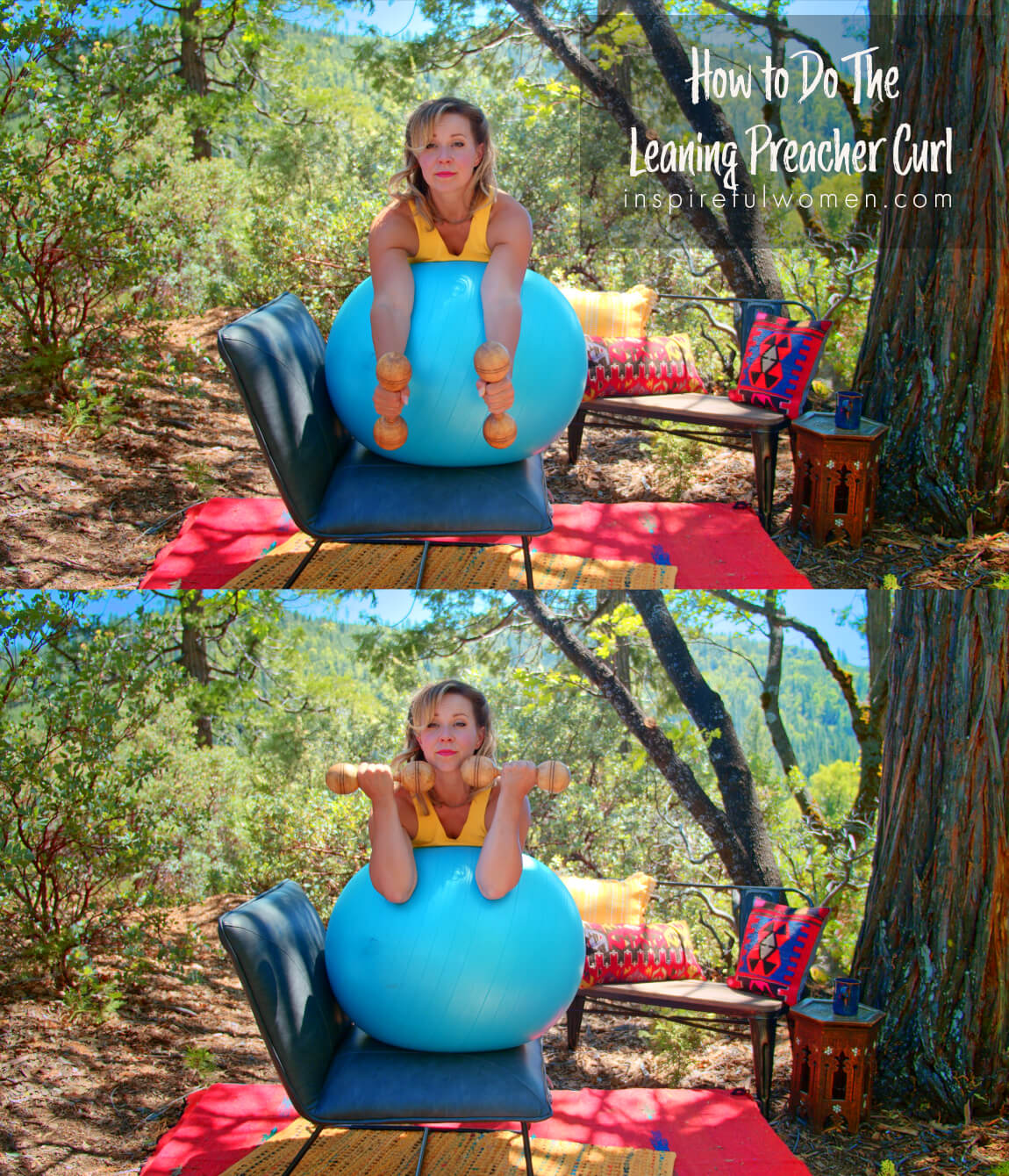

COMMON MISTAKES
COMMON MISTAKES
WHAT TO AVOID WITH THE Dumbbell Leaning Preacher Curl
KEY TIP:
Guess what? Good news! Many avoids are the same for most movements. Once you learn the basics, there's really only a few extra avoids for each individual movement.
1. Avoid Elbows Flaring
AVOID: Letting your elbows move out to the sides
WHY NOT?
- This will change the downward pull of gravity and will increase the activity of the shoulder.
WHAT TO DO:
- The upper arm should be resting on your sides, not moving.
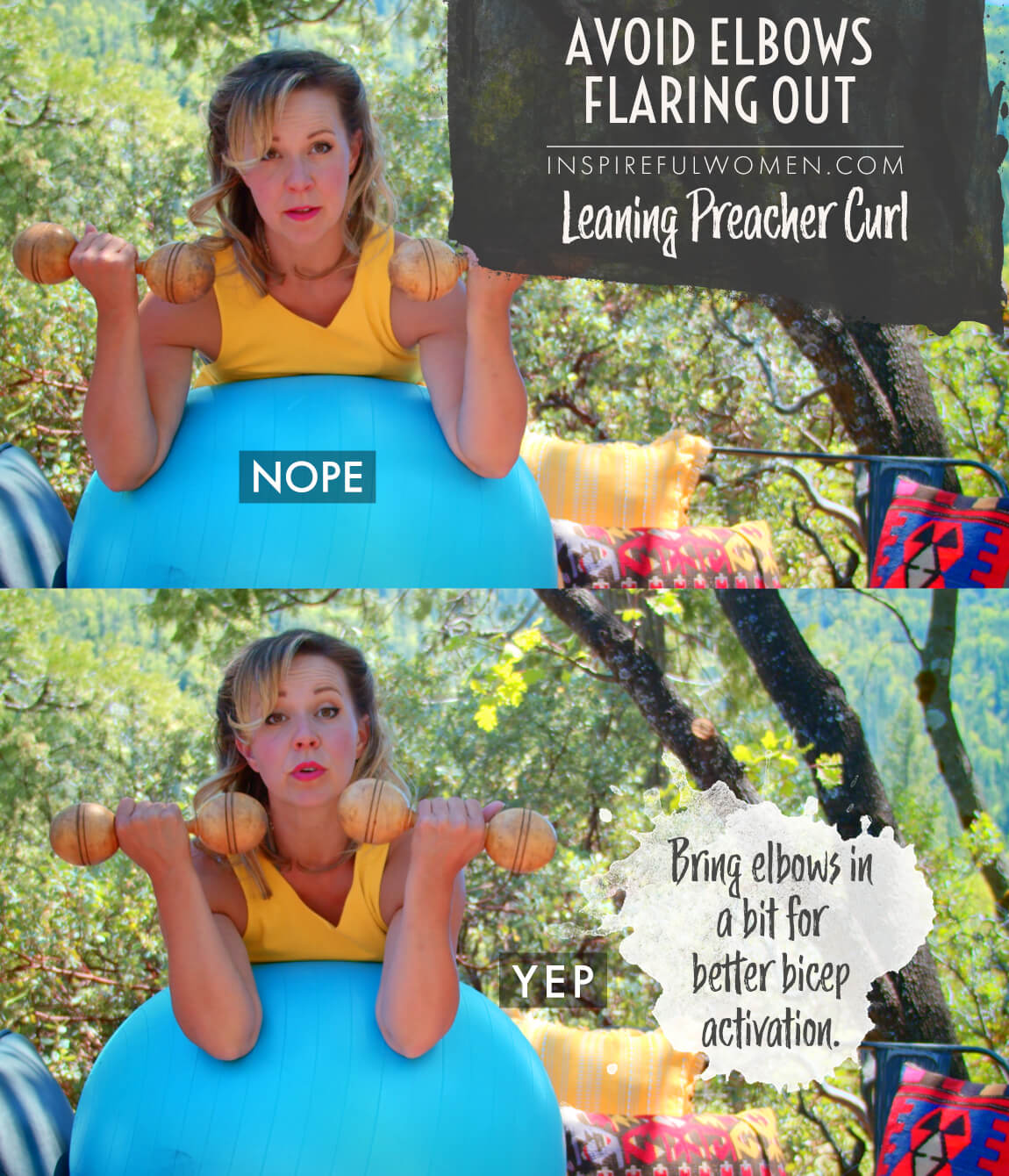
2. Avoid Rounding Shoulders
AVOID: Rounding the shoulders forward.
WHY NOT?
- This means that you are trying to use the anterior deltoid and chest muscles to help bend the elbow.
- This can decrease the space between the shoulder blade and the upper arm bone (humerus) and irritate the tissues.
WHAT TO DO:
- Pull the shoulder blades in and down the back, and lift the sternum to correct your posture.
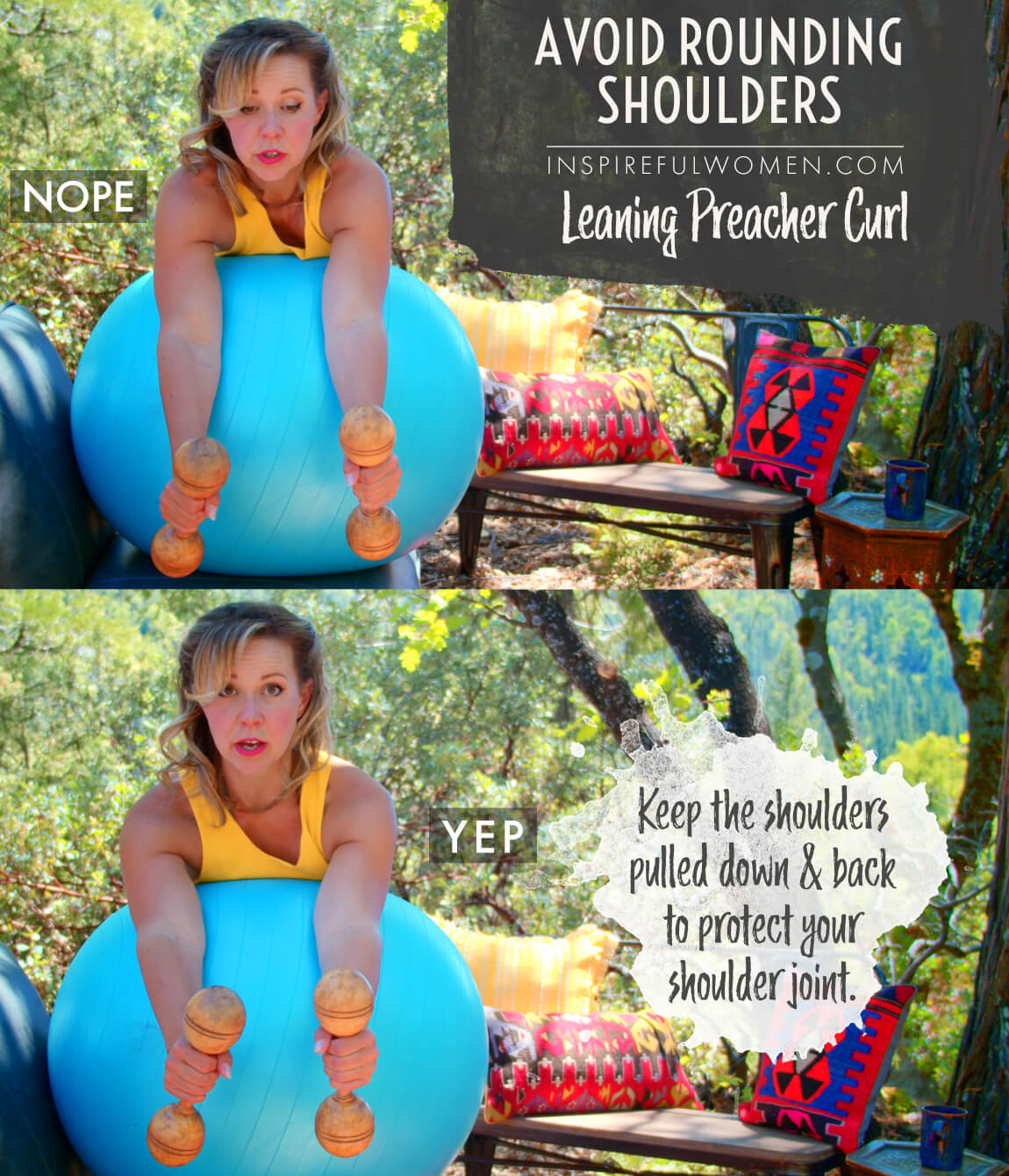
3. Avoid Hyperextending Elbow Joints
AVOID: Hyperextending (bending backwards) the elbow joint. In the starting position, the weight can pull your hand down and cause your elbow to hyperextend.
WHY NOT?
- This can strain the ligaments of the elbow joint.
WHAT TO DO:
- Keep a slight bend in your elbow if needed.
- Lower the resistance by using lighter weights or band.
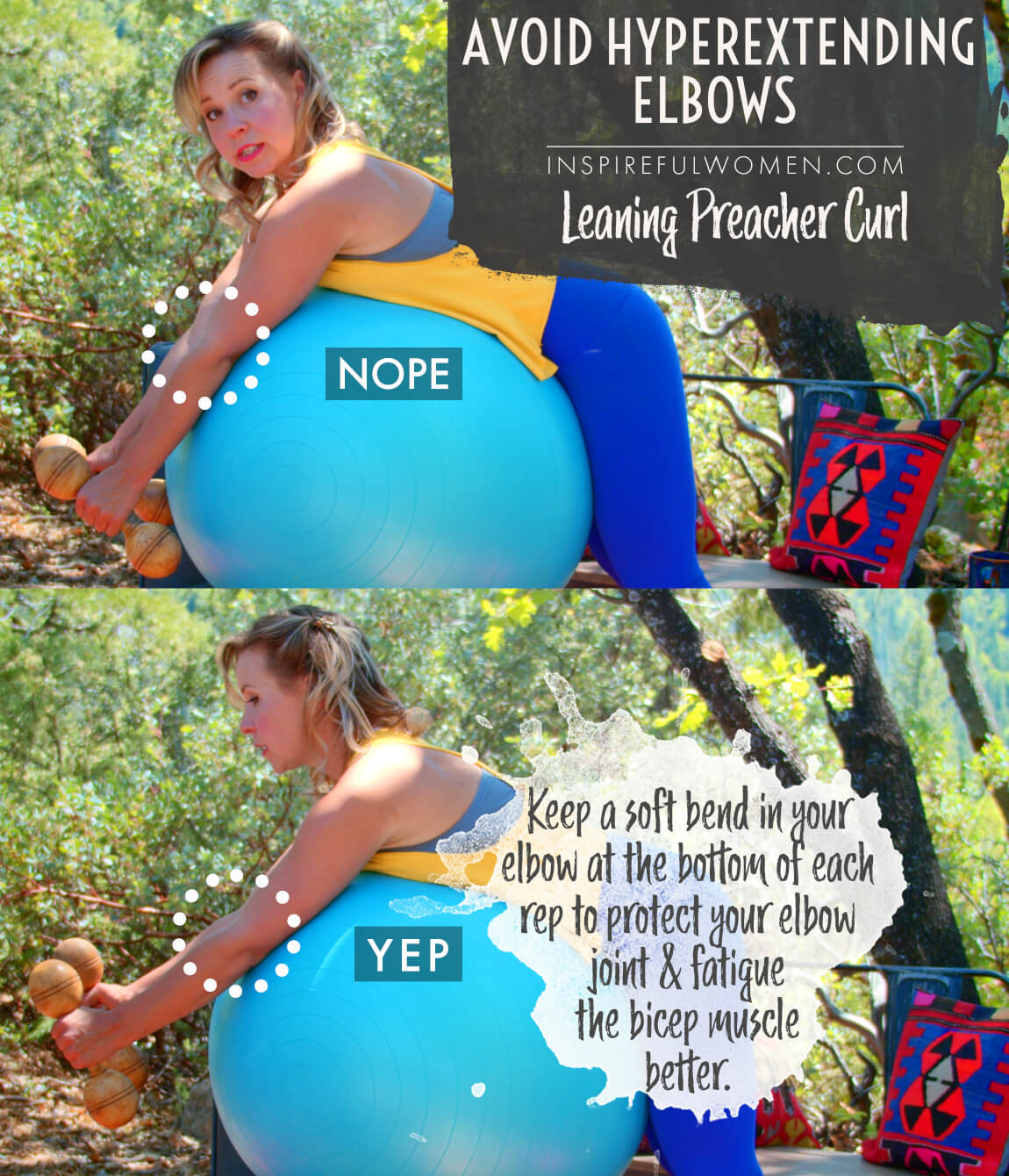
4. Avoid Shifting Weight
AVOID: Leaning back or shifting your weight.
WHY NOT:
- This will decrease the work being done by the muscles of the arms and upper back
- This is a common way the brain will try to make the exercise easier - using your body weight to help pull the hands up.
WHAT TO DO:
- Keep the shoulders over the hips, over the feet, keep your weight evenly distributed in your feet.
- Bend the knees slightly and activate your core muscles.

5. Avoid Hunching Shoulders
AVOID: Hunching the shoulders up towards the ears.
WHY NOT?
- This can happen when you try to use your upper trap to help the biceps
- You will note decreased space between the shoulders and earlobes.
WHAT TO DO:
- Pull the shoulders down to keep the space between the ear and the shoulder during the entire rep - this opens up the shoulder to avoid tendon irritation and decreases the activity of the upper traps.
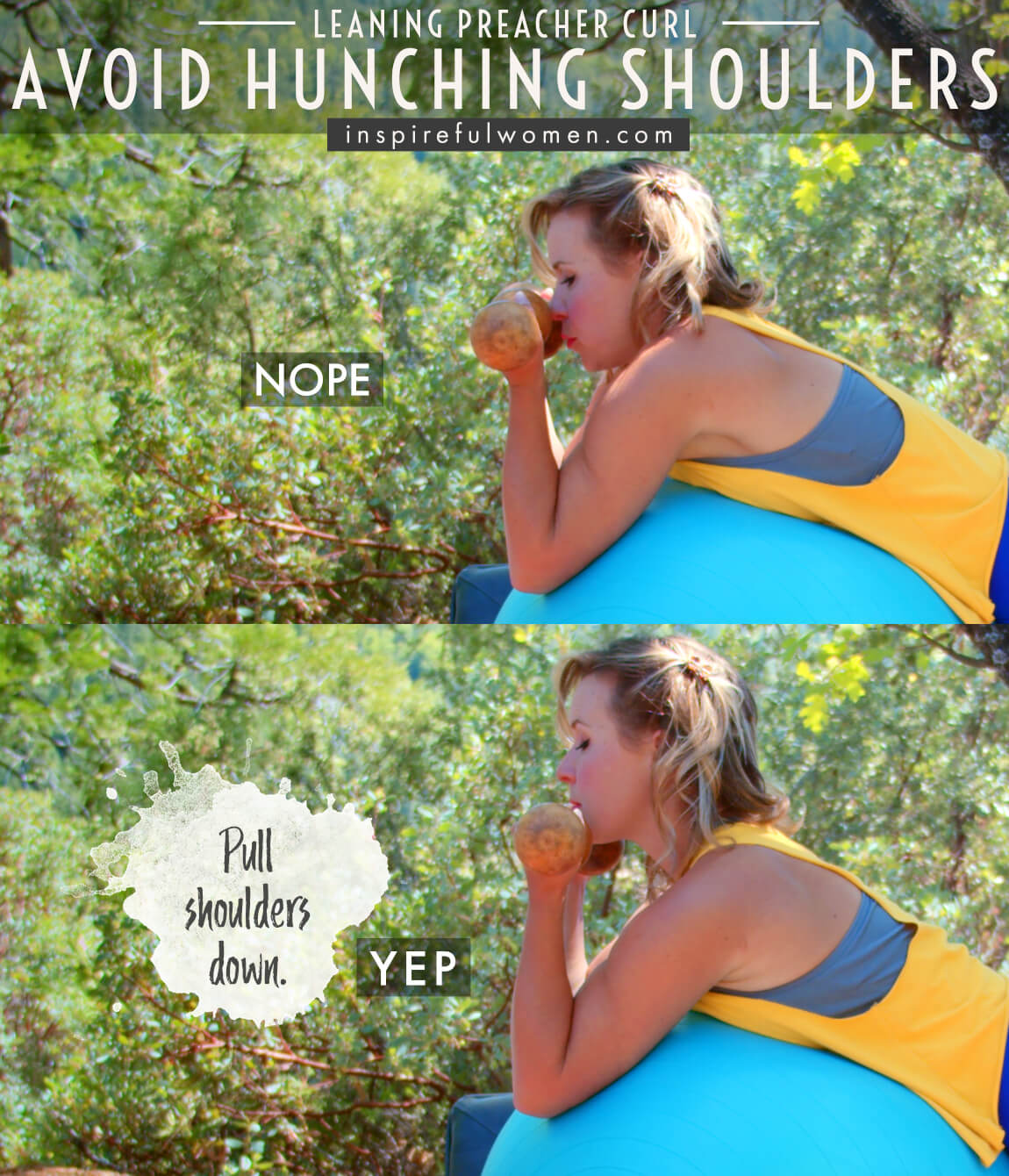
6. Avoid Bending Wrists
AVOID: Bending at your wrists.
WHY NOT?
- Poor alignment (bent forward or backward) or repetitive movement through the wrist can lead to joint and/or soft tissue irritation or injury over time.
WHAT TO DO:
- Your wrists should be in line with your forearm and should be still throughout the exercise.
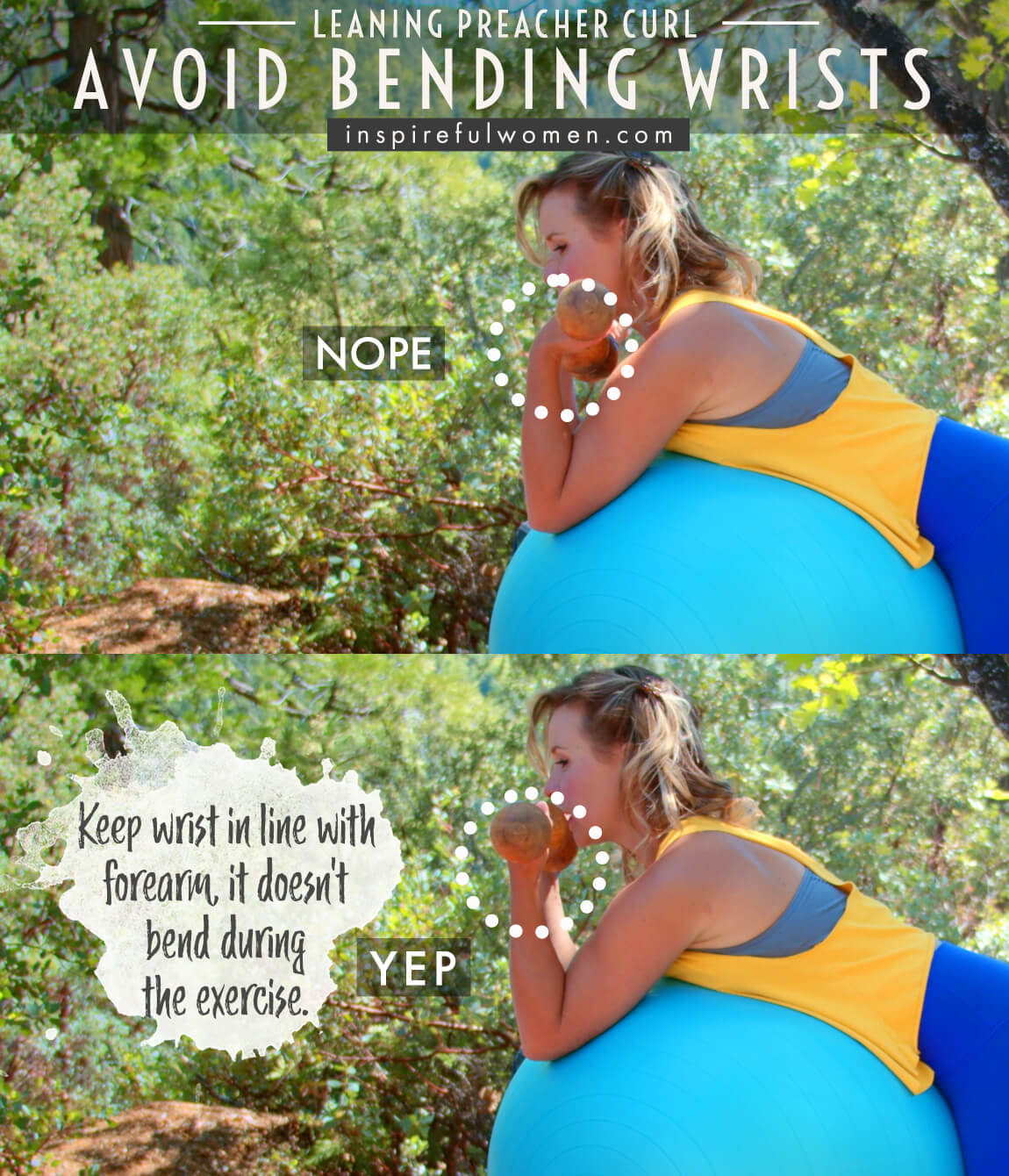
7. Avoid locking knees
AVOID: Straightening or locking the knees of standing legs.
WHY NOT?
- If your knees are locked you may feel pressure or discomfort in the low back or knees.
- Locking the knees puts stress on the knee joint and can make it more difficult to maintain a neutral spine.
WHAT TO DO:
- The knees should be soft.
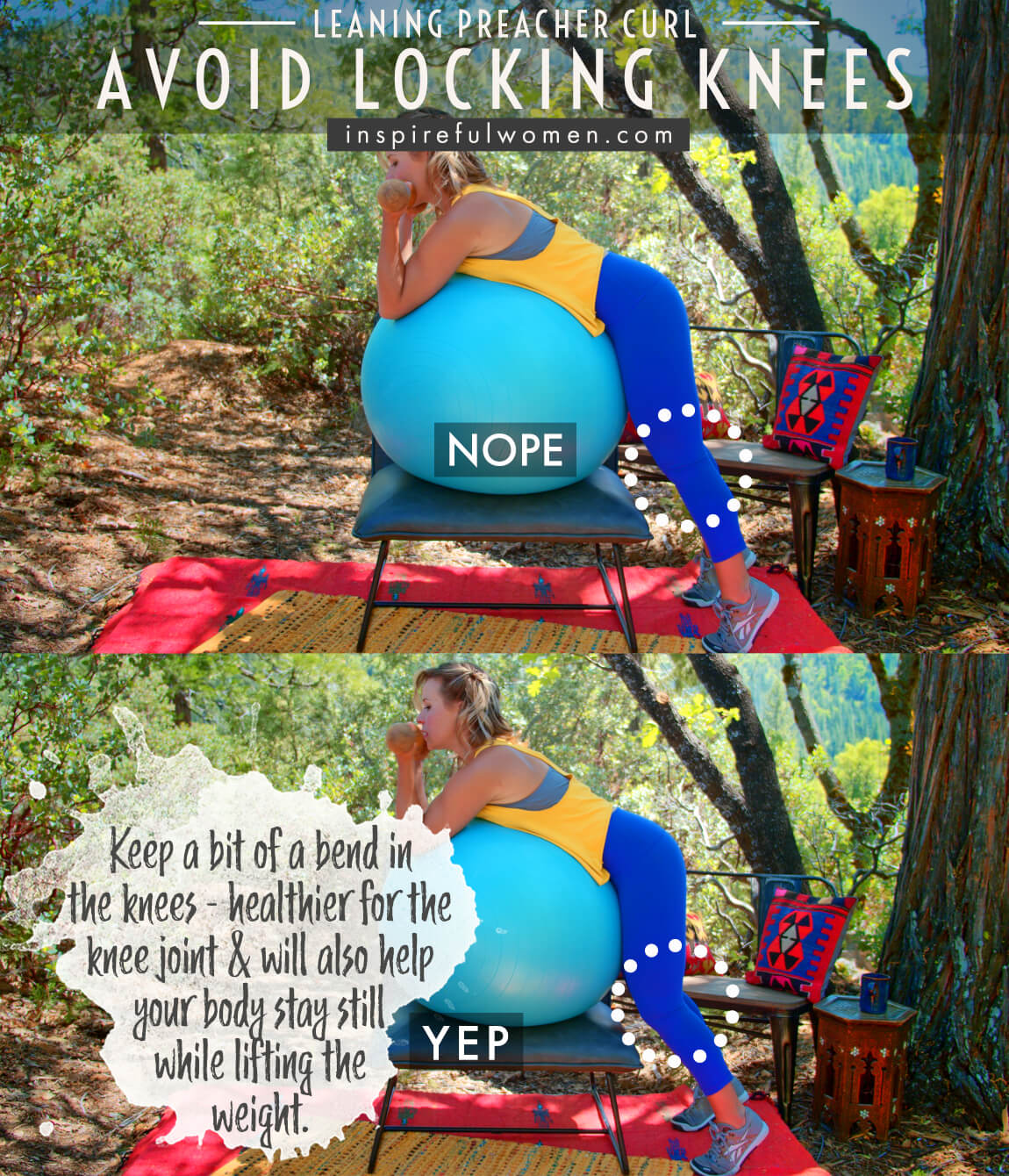
8. Avoid Bending Neck
AVOID: Bending neck.
WHY NOT?
- This can lead to neck strain, injury or damage over time.
- You may feel neck discomfort, or gripping with your neck muscles.
WHAT TO DO:
- Gripping neck muscles in an attempt to stabilize the shoulders: relax the neck and activate the core muscles more, activate the scapular stabilizers in retraction and depression.
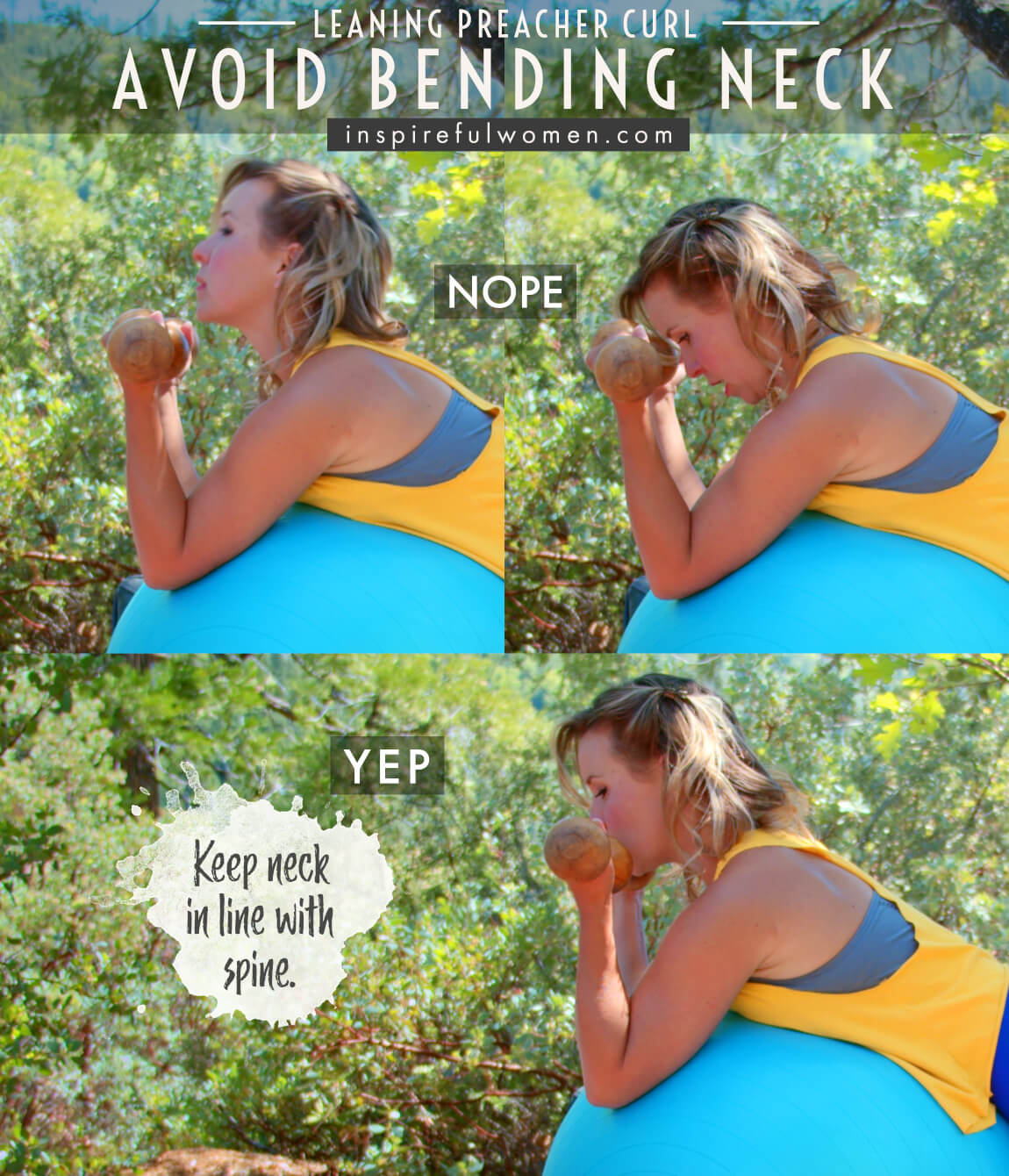
WHAT WE'RE DOING TODAY
WHAT & WHY
BENEFITS OF TRAINING THE biceps
WHAT
How many ways can you adjust the basic bicep curl to make it do something slightly different? A few, a few. This is one of the most weird ones probably. The positioning of this bicep curl is such that it lets us target the the short head of the biceps a bit more- which is that more ball shaped portion of the muscle (which we can only see if we like, workout a lot for awhile) that's towards the inside of our upper arm close to our chest muscles.
Other than that, the movement is the same as far as just bending our elbows and rotating our palms to face up at the top of each rep.
WHY BOTHER DOING IT?
WHY
WHY DO WE EVEN CARE?
VARIETY FOR BICEPS
The biceps brachii (bicep means that the muscle has two heads, and brachii - meaning arm). Since the biceps is technically made up of two portions of muscle, changing up positioning and how we lift weight can target one portion more than the other and vice versa.
Both heads work to bend (flex) the elbow and rotate our forearm so the palm of our hand is up or forward (supination). To improve the strength and health of the biceps muscle it is a good idea to include exercises that will work both parts of the muscle. It is also always a good idea to add variety to your workout so that the muscles are worked in many different positions. Movements that put the arm in positions that move the short head to face forward will preferentially work the short head more than the long head.
Plus, who doesn't like to be in a slightly more "resting" type position, which we get to do with the stability ball supporting our torso & being on our knees.
EVERYDAY LIFE
EVERYDAY LIFE &
MUSCLE FUNCTION
HOW WE USE OUR biceps MUSCLES IN EVERYDAY LIFE
1. BENDING THE ELBOW (ELBOW FLEXION)
- Eating
- Lifting glass for drinking
- Dressing
- Lifting
- Carrying
- Washing/brushing hair
- Stirring
- Painting
- Brushing your teeth
- Weeding
- The list is pretty much endless...
2. TURNING YOU FOREARM UP (SUPINATION)
- Turning a door knob
- Using a screwdriver
- Turning a key
- Turning a spigot
- Receiving change
- Carrying a plate
3. LIFTING THE ARM (SHOULDER FLEXION)
- Reaching up
- Dressing
- Pushing a window up
- Washing windows
- Lifting up to the front - kids, boxes
- Carrying in front: kids, groceries, books
4. STABILIZING THE ELBOW AND SHOULDER
- Writing
- Knitting
- Reading a book
- Using a screwdriver
- Holding items in front of you - carrying a heavy box, pushing a wheelbarrow
HOW TO FEEL WHAT MUSCLE IS WORKING
How to Feel What Muscle is Working
Bend your elbow. Place the other hand on the upper arm with the bent elbow. Lift a heavy object with the arm - you will feel the biceps contract under your hand.
SCIENCY STUFF
SCIENCY STUFF
SPIFFILICIOUS FACTS ABOUT MUSCLES & MOVES
This exercise targets the brachialis and the short head of the biceps brachii muscle. The short head attaches to the coracoid process at the front of the shoulder blade, and lies along the inside of the upper arm. The long head of the biceps crosses the shoulder joint to attach to the “socket” portion of the shoulder joint (on the shoulder blade). Positioning the upper arm in flexion puts the long head of the biceps in a position where it is not able to contribute as much to elbow flexion. The EMG studies support this and the thought is that the long head is shortened over the shoulder, so that it is not able to produce as much force. Going back to the force-length curve - the muscle is strongest in the middle of the range - not shortened or lengthened.
Starting in this position also works the elbow flexors the hardest when they are in a stretched position. The force on the biceps is greatest when the forearm is parallel to the floor. Working the muscles in this lengthened position is thought to promote muscle growth.
Rotating the upper arm out arm is thought to bias the short head of the biceps by changing the orientation of the muscle fibers, meaning the line of pull on our muscles is more opposite the short head which means it will be in a place to do more of the work more naturally. Positioning the arm so the fibers that you want to get are directly opposite the pull of gravity.
To get more detailed - it has to do with the origin and insertion of the muscle and the lever arm of the muscle bundle itself - this is called the mechanical advantage of the muscle. So the thought is that a narrow grip biceps curl will rotate the arm so that the long head is facing forward and a wide grip will position the short head forward. A stability ball is used to stabilize the upper body and upper arms. This will decrease the need to worry about stabilizing the upper arm and shoulders, the focus can be on contracting the elbow flexors and supinators.
The long head of the biceps originates towards the top of the shoulder joint, right above where the upper arm bone forms a joint with the shoulder blade. The long head is positioned towards the outer side of the upper arm. The short head attaches to the shoulder blade towards the inside of the shoulder - right below the end of the collar bone. If you find the end of the collar bone closest to the shoulder joint, and drop your fingers down about ¼ inch you can feel the place where the short head of the biceps attaches. The short head of the biceps lies towards the inner side of the upper arm. Both of the two heads travel down the soft (hairless) part of the arm and join about mid-way down, then cross the elbow joint and insert on the forearm.
ALLLL MUSCLES & WHEN
ALL MUSCLES WORKING & WHEN DURING THE Dumbbell Leaning Preacher Curl
The shoulder blade is held down and back (depression and retraction - rhomboids, lats, pectoralis, serratus, trapezius), and to hold the upper arm still. The upper arm is positioned and supported in flexion and external rotation. This puts the long head of the biceps in a position where it is shortened and at a disadvantage - it is not as capable of helping to bend the elbow in this position.
The brachialis and biceps (with the short head in a position to work more than the long head) contracts concentrically to bend (flex) the elbow and rotate (supinate) the forearm. The brachioradialis does not contribute unless power or speed is needed – for quicker movements or heavy loads. The supinator muscle will assist with supination. The greatest resistance on the elbow flexors will be when the weight is parallel to the floor. As the elbows bend the load on the muscles will decrease.
The wrist muscles (flexor carpi radialis FCR, flexor carpi ulnaris FCU and palmaris longus)) work to hold the wrist in a neutral position as the weight of gravity pulls down on the weight held in the hand.
The biceps brachii and brachialis work eccentrically to straighten the elbow and return to the starting position.
PIN IT FOR LATER!
